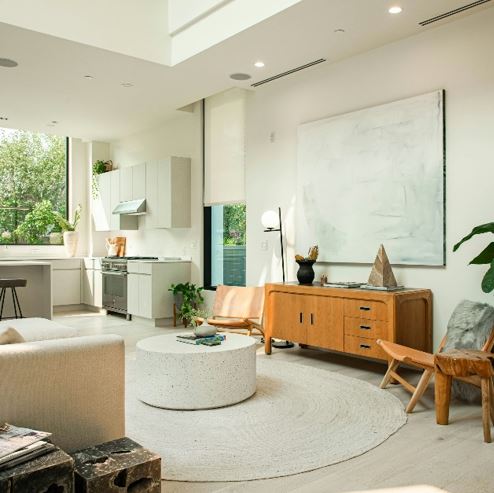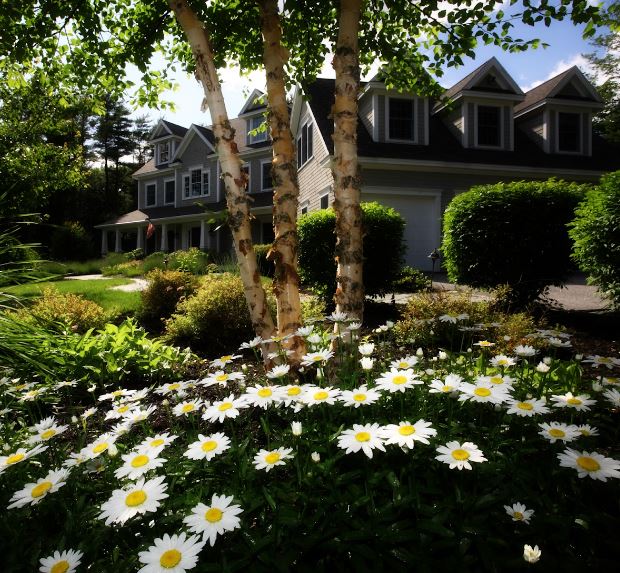How to Create a Brighter, More Open Living Space Without Major Renovations

A bright and open living space can make a home feel more inviting, comfortable, and spacious. However, achieving this look doesn’t necessarily require tearing down walls or making costly structural changes. With thoughtful adjustments to lighting, furniture arrangement, color schemes, and decor, you can transform your home into a brighter and airier space without undergoing major renovations.
Simple changes, such as maximizing natural light, selecting the right furnishings, and using reflective surfaces, can create an open atmosphere. By implementing a strategic approach, homeowners can enhance their living spaces without significant financial investment. The following strategies will help you create a well-lit, open environment that feels more expansive and welcoming.
Enhancing Natural Light with Proper Windows
One of the most effective ways to create a brighter living space is by maximizing natural light. Sunlight not only improves the overall atmosphere but also reduces the need for artificial lighting during the day. If your home feels dark or closed off, consider assessing your windows to determine how they can be optimized for better light flow.
Ensuring that your windows are clean and free of obstructions is a simple yet often overlooked step. Dirt, grime, and heavy window treatments can reduce the amount of light entering a room. Opting for sheer curtains or blinds that allow light to filter through can make a significant difference. If privacy is a concern, light-filtering shades provide a balance between natural brightness and personal space.
For those who want to enhance their home’s natural light, hiring a window company can ensure proper window selection and placement to maximize brightness without requiring major modifications.
Remember, properly selected and positioned windows can make a home feel significantly more open and inviting.
Using Light Colors to Expand the Space
The color palette of a room has a substantial impact on how bright and spacious it feels. Dark colors absorb light, making a space appear smaller and dimmer, while lighter shades reflect light, creating an open and airy effect. Choosing a neutral or pastel color scheme for walls, ceilings, and large furniture pieces can dramatically improve the perception of space.
White, cream, light gray, and soft beige are excellent choices for walls because they bounce light throughout the room. For a more dynamic look, adding subtle pastel hues like pale blue, soft green, or blush pink can introduce warmth without overwhelming the space. Painting the ceiling a slightly lighter shade than the walls also creates the illusion of higher ceilings, making the room feel even larger.
Incorporating Mirrors and Reflective Surfaces
Mirrors and reflective surfaces are powerful tools for brightening up a living space. When strategically placed, mirrors reflect natural and artificial light, amplifying brightness and giving the illusion of additional space.
A large mirror positioned across from a window can double the amount of light entering the room. Similarly, mirrored furniture, glossy finishes, and metallic accents—such as chrome or brass—can help distribute light throughout the space.
Optimizing Artificial Lighting for Maximum Brightness
Even with ample natural light, artificial lighting plays a crucial role in maintaining a bright and inviting atmosphere throughout the day and night. Layering different types of lighting ensures balanced illumination in every corner of the room.
Start by incorporating ambient lighting, which provides overall illumination. Ceiling-mounted fixtures, recessed lighting, or pendant lights serve as the primary source of brightness. To avoid harsh shadows, supplement ambient lighting with task lighting, such as floor lamps, table lamps, or under-cabinet lighting. This approach ensures specific areas, such as reading nooks or workspaces, receive sufficient light.
Decluttering to Create an Open and Airy Environment
Clutter can make a room feel cramped and dark, reducing the perception of openness. Simplifying the layout and minimizing excess belongings can significantly impact how spacious and bright a living area feels.
Adopting a minimalist approach doesn’t mean sacrificing personal style; rather, it involves prioritizing essential pieces and removing unnecessary items. Streamlining furniture arrangements allows for better light distribution and airflow. Opting for multi-functional furniture—such as storage ottomans, nesting tables, or built-in shelving—helps keep clutter at bay while maintaining a sleek, open look.
Choosing Lightweight and Airy Textiles
The choice of textiles in a room can influence how bright and spacious it appears. Heavy drapes, dark upholstery, and thick rugs can make a space feel confined. Instead, opting for lightweight fabrics in soft, neutral tones contributes to a more open feel.
Sheer curtains allow light to pass through while still providing privacy. If heavier curtains are necessary for insulation, selecting ones in light colors ensures they don’t overwhelm the room. Similarly, using light-colored throws, cushions, and bedding enhances the sense of airiness.
Rearranging Furniture for a Spacious Feel
The way furniture is arranged can significantly impact how open and bright a space appears. Bulky furniture placed too close together can create a cluttered effect, blocking light and movement. Thoughtfully positioning furniture to allow for clear pathways and unobstructed windows can make a dramatic difference.
Opting for furniture with exposed legs, glass surfaces, or open shelving contributes to an airy aesthetic. Low-profile pieces also help maintain an unencumbered visual flow. If a room has limited space, choosing furniture that serves multiple purposes—such as a storage bench or a foldable dining table—can maximize functionality without overcrowding the area.
Bringing in Indoor Plants for a Fresh, Open Look
Indoor plants add vibrancy and freshness to a living space while enhancing the perception of openness. Strategically placing greenery near windows, shelves, or corners can create a natural flow of energy and light.
Selecting plants with delicate foliage—such as ferns, peace lilies, or snake plants—ensures they do not overwhelm the space. Hanging planters or wall-mounted greenery can also introduce a touch of nature without taking up floor space.
All in all, creating a brighter, more open living space does not require major renovations. By making thoughtful adjustments—such as optimizing windows, using light colors, incorporating reflective surfaces, and enhancing lighting—you can transform your home into a well-lit, inviting environment. Decluttering, selecting the right textiles, rearranging furniture, and introducing indoor plants further contribute to an open and spacious feel.






